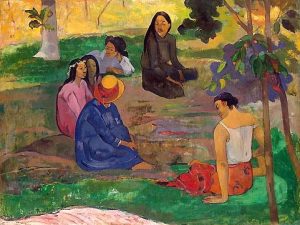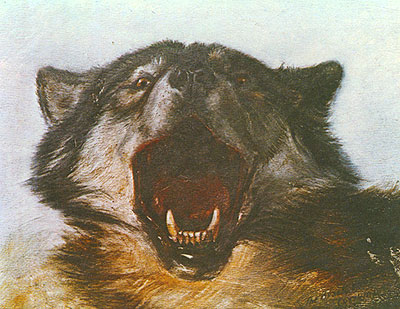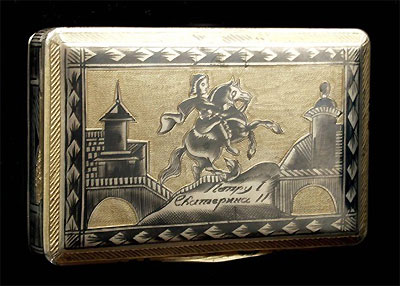Paul Gauguin – “the world of Tahiti”
 When you get to the hall where the paintings of Gauguin hang, you find yourself in a special world of images, mysteriously flickering colors, slow rhythms. Everything here is unusual – the sky is golden, the earth is red, yellow, pink. There is solemn peace throughout.
When you get to the hall where the paintings of Gauguin hang, you find yourself in a special world of images, mysteriously flickering colors, slow rhythms. Everything here is unusual – the sky is golden, the earth is red, yellow, pink. There is solemn peace throughout.
Stuck in motionless poses near the huts of the woman, not moving, a fisherman sitting by the boat, squatted mother with a child. The monumental figures of people are connected with nature and seem to be a part of it. There is no sense of movement even in those scenes where the characters, judging by the nature of the composition, have to go on their way. The atmosphere of the picture is imbued with silence; neither wind noise, nor rustle of foliage, nor splashing of waves is felt. Motionless and a group of women, located on the lawn. “Words, words” (or “Conversation”) the artist called the picture, probably referring to the futility of reasoning, without which everything is already clear. Many canvases of the artist have strange names: “Naveh Naveh Moe”, “Rave te hiti aamu”, “Farari Maru-ru”. Some of them are easy to decipher, others still represent a riddle.
Not only the works are unusual, but the life of Paul Gauguin is full of vicissitudes. He was born in 1848 in Paris, and graduated from his life in 1903 on a small island of Hiva Oa in Oceania. His father was a journalist, and distant relatives of his mother belonged to the top of the Spanish-Peruvian nobility and lived in Peru. Memories of the country of childhood, a large, noisy patriarchal family, left a bright trace in the heart of the future artist. They merged with the idea of idyllic life in the tropics, bright colors and hot sun.
First impressions had a decisive influence on the formation of Gauguin’s artistic tastes, although until the age of 23, nothing foreshadowed his interest in art. The dream of distant countries will not leave the young man and on his return to France. For sixteen years he is hired by cabin boy to a merchant ship and makes several voyages to the shores of South America. After parting with the fleet in 1871, Gauguin settled in Paris.
It may seem that he lives in the interests of the ordinary bourgeois – becomes wealthy, marries, acquires a collection of paintings. Unusual was only a sudden fascination with art, which gradually but imperiously displaces other interests from his life. In 1883, he abandoned his service in the bank, and welfare soon gave way to need. Gauguin is forced to leave Paris, leaving five children and a wife in her homeland – in Copenhagen. From now on, his fate – loneliness, lack of money, wandering, the struggle for recognition, which came only after death.
The first student period of Gauguin is closely linked to impressionism – the artistic direction of the second half of the XIX century. But the school of impressionism was only the beginning of the formation of creative interests, as well as for other post-impressionists – Van Gogh, Cezanne, Cera. Each of them later went his own way of searching and finds.
Leaving Paris for nature, Gauguin excludes him from his work. The city becomes for him a symbol of the domination of businessmen. Everything in modern bourgeois culture provokes protest in it – a way of life, artistic canons. Wherever the artist goes from now on, dreams that everything away from Paris and European civilization will turn out differently, are accompanied by his actions and creative ideas.
Brittany, north of France, where Gauguin spent a number of years and created the first masterpieces, soon ceases to satisfy him as an artist. The Breton world is a quiet, mournful world; here, human relations with nature are not reflected in harmonious harmony, but in the power of the people of harsh, hostile elements. His eye, looking for colorful explosions, comes up against the muffled undertones of the Breton land, granite boulders, clumsy figures in poor clothes. The dream of countries where there is a flood of sunlight takes over the artist. He is convinced that people far from bourgeois civilization live a joyful, natural life in the bosom of generous nature, obeying the eternal laws of being. Gauguin recalls that the blood of the ancient Incas is flowing in his veins, and he hopes to find a source of inspiration on an island lost far away in Oceania, this is necessary for his art.
On the eighth of June, 1891, after 63 days of sailing, Gauguin set foot on the ground “Noah Noah” – “Fragrant” – the island of Tahiti. The day before he was 43 years old. The artist was destined to live for only twelve years, but it was during these years that works were created that immortalized his name. In the same place, in Oceania, fifteen paintings were painted that now adorn the halls of the Hermitage.
The very first contact with reality showed Gauguin that the “civilization” represented by colonial officials, merchants and soldiers triumphed in Papeete, the capital of Tahiti, long ago. “The childhood of mankind”, the idyllic past, in search of which he left France, must also be sought here outside the city.



